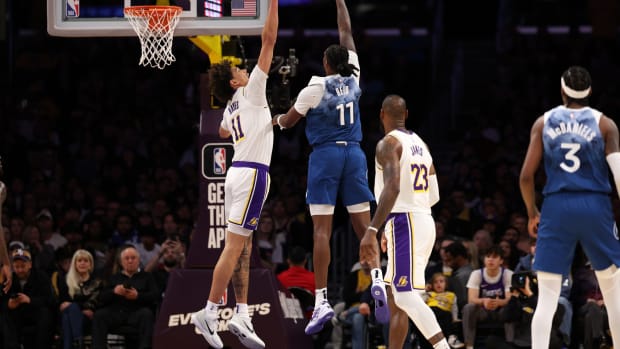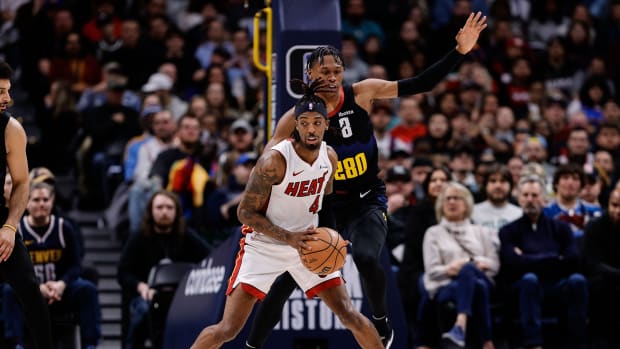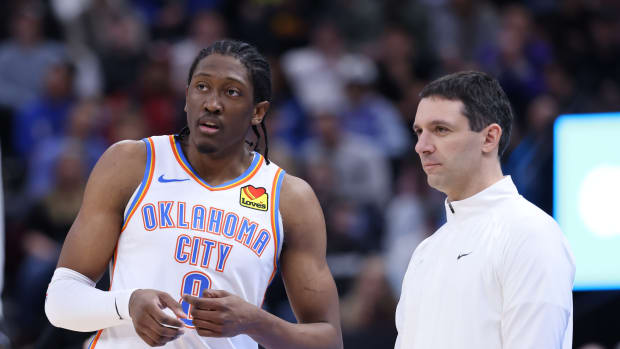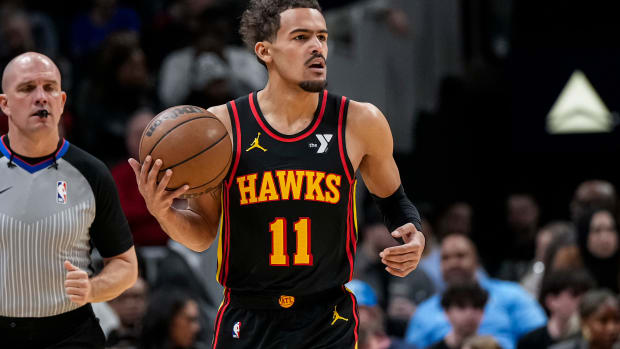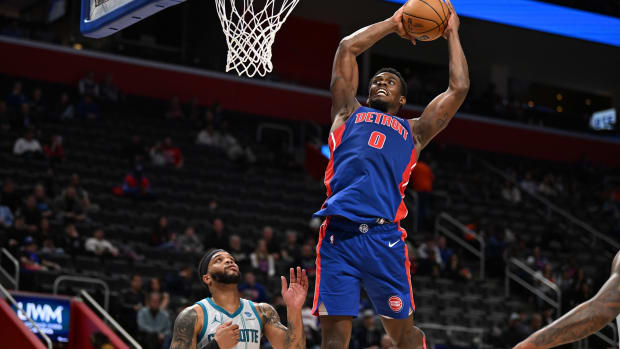2018 NBA Draft: Four Prospects Who Should Test Professional Waters
The early-entry deadline for college underclassmen to declare their intent to turn pro is April 22, and while a great number of prospects have already made decisions, there’s still a good chunk of talent yet to announce their plans. Provided players don’t hire agents and retain amateur status, entering the NBA draft is no longer a binding commitment, and for those with substantial upside as professionals, it’s a favorable system.
Even with the option to return to school, there are always players who choose to bypass the pre-draft process altogether, with Arkansas center Daniel Gafford, a likely first-rounder, being chief among them this year. Of the players remaining, several are in fascinating positions as it pertains to the draft. Here are four with NBA potential who have yet to announce their draft decisions—and could very well stay in school—but would be well-served going through the process at bare minimum.
Donte DiVincenzo, Villanova, G, SO.
Before becoming a national icon overnight, DiVincenzo was widely viewed as a player who would end up draftable in 2019, and to optimists looked to be a potential fringe first-rounder. After putting on the best display of his career with 31 points to lift Villanova to a national title, the redshirt sophomore’s pro timetable has absolutely accelerated, and at the very least he can make it happen if he chooses. It’s possible that levels of NBA optimism surrounding his game may never be higher.
It’s true that basic critical thinking suggests judging a player off one game is foolhardy. To that point, there are two main things to consider. First, anyone who watched DiVincenzo closely all season would correctly insist that he didn’t appear out of nowhere: he offers a nice mix of shooting, athleticism and ability at both guard spots. He’s tough and has good size, though up close he appears a bit smaller than his listed height of 6’5”, and has a case as a Top 40 prospect based on talent.
The second thing to keep in mind is that “draft stock” is really just a function of timing, mystery, and the level of recency bias that surfaces around the league every spring, when the Malachi Richardsons of the world ball out over the course of deep tournament runs end up drafted in the late first round. With his title-game performance as the cherry on top, DiVincenzo showed just enough this season to pique serious interest. As Villanova’s sixth man, he was visible, but not the focal point of many scouting trips. A lot of the time, top front office decision-makers don’t spend as much time seeing prospects during the season as their various scouts and delegates, so ultimately, the later-season impressions tend to matter. DiVincenzo is riding just the right amount of hype to justify taking the dive now.
2018 NBA Mock Draft 6.0: Projecting All 60 Picks After March Madness
Rui Hachimura, Gonzaga, F, SO.
There was substantial excitement over Hachimura coming into the season after a strong showing for Japan in international competition, but a smaller role than expected at Gonzaga tempered a major statistical breakout. He did, however, average 20.1 points, 8.2 rebounds and nearly a block and a steal per-36 minutes while shooting 56.9% from the floor. NBA scouting is about projection, and that caliber of play was plenty to drum up interest around the league. Like DiVincenzo, Hachimura could return to Gonzaga and presumably be the team’s go-to option on a greater basis next season.
However, Hachimura may not have to, which is the beauty of the system—there’s no on-court reason for him not to test the draft. Multiple people around the league have suggested to me in recent weeks that the sophomore forward would be all but a lock for a guaranteed first-round deal if he decided to enter the draft, and at this point it’s essentially a matter of when he wants it. He can go back to school and hope to prove he’s a much better jump shooter, or he can get paid and develop his skills under professional tutelage around the clock. Going back to Gonzaga—without even assessing options—would be remiss.
Zhaire Smith, Texas Tech, G, SO.
Smith debuted on our mock draft this week as a potential first-rounder and his story at this point is well-known—he went from unknown recruit to legitimate NBA prospect rather quickly, and based on his athletic talent and promise as a defender, could fare well if he comes out now. Signs seem to point toward him doing so and at least testing, and much like DiVincenzo he’s riding a degree of favorable recency bias at this point. Bursting onto the radar late means less time for the NBA to get acquainted with you and figure out your game. That level of uncertainty is unhelpful to evaluators, but conversely a boon to how prospects end up being perceived.
A good example here is Hamidou Diallo, who tested and came back to Kentucky after arriving in Lexington in the middle of last season, choosing to play his freshman year out in the fall rather than go “none-and-done,” so to speak. It ended up being a difficult choice: Diallo’s lack of ball-handling skills and overall raw talent level now tend to be viewed in a less exciting light, after an up-and-down year in the SEC in which it became clear the only thing to sink your teeth into about his game was his freak athleticism. Smith is younger than Diallo and is now in a similar boat, given what we know he does well (run, jump, force turnovers) and doesn’t (create his own shot, score with volume generally). It could certainly break both ways for him, but the point is that the interest level is there to justify leaving. It would likely be worth it.
Bruno Fernando, Maryland, F, FR.
Scouts we spoke with at the Big Ten tournament were mostly enamored with Fernando’s physical tools, which make him a potential rim-running, shot-contesting menace as he continues to develop. Like Hachimura, he was confined to a smaller-than-preferable offensive role in college, and the big freshman from Angola could be best off just making the jump now, where a smart team could potentially snag him before everyone completely catches on. His physical ability is immense, he plays hard and has the makings of a jump shot that he rarely flashed at Maryland.
At 6’10” with a 7’4” wingspan, Fernando is ready to compete athletically, with a hulking frame similar dimensionally to Texas A&M’s Robert Williams, but stands an inch or so shorter and is listed five pounds lighter. Get this: Per-36 minutes, Williams averaged 14.6 points, 13 rebounds, 3.5 blocks and shot 63% from the floor and 47.1% from the foul line. By the same measure, Fernando averaged 16.5 points, 10.5 rebounds and 2.0 blocks at 57.8% and 74% clips. Williams has a stronger feel for the game and has earned first-round status, but Fernando may not be too far behind, which at the very least is a compelling case for being drafted off potential somewhere in the middle of the draft. At the very least, Fernando can force the issue by getting additional exposure in the coming weeks and testing the draft. Again, it simply boils down to there not being a clear reason for guys like him not to test.
































